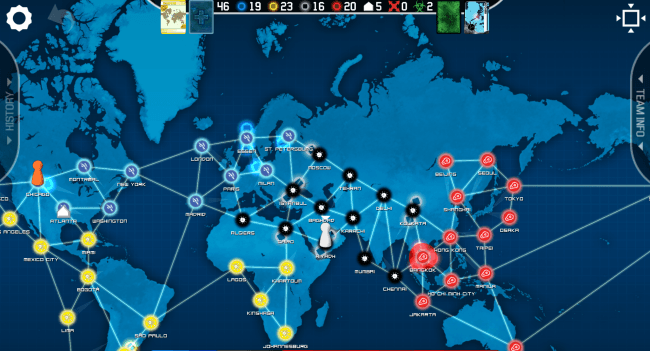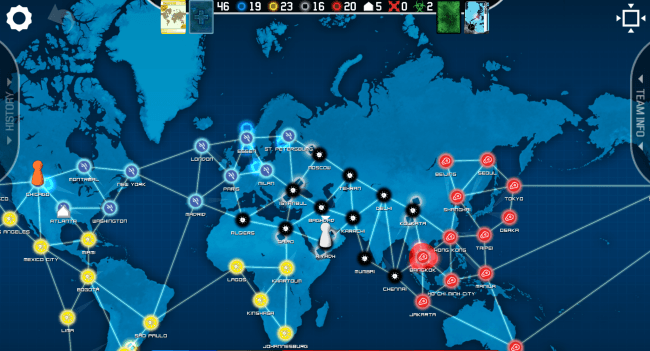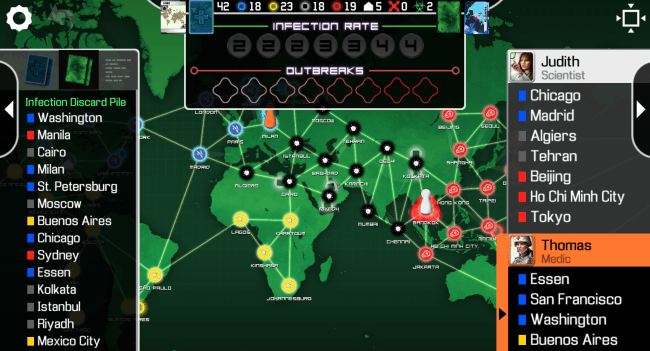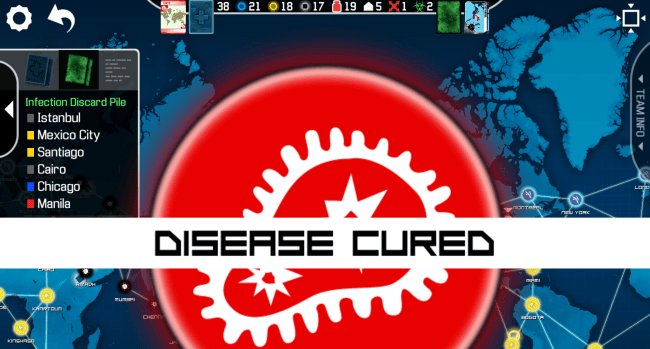- Wondering how to get Monopoly GO! free rolls? Well, you’ve come to the right place. In this guide, we provide you with a bunch of tips and tricks to get some free rolls for the hit new mobile game. We’ll …
Best Roblox Horror Games to Play Right Now – Updated Weekly
By Adele Wilson
Our Best Roblox Horror Games guide features the scariest and most creative experiences to play right now on the platform!The BEST Roblox Games of The Week – Games You Need To Play!
By Sho Roberts
Our feature shares our pick for the Best Roblox Games of the week! With our feature, we guarantee you'll find something new to play!All Grades in Type Soul – Each Race Explained
By Adele Wilson
Our All Grades in Type Soul guide lists every grade in the game for all races, including how to increase your grade quickly!
Pandemic Review
Pandemic is the original co-operative board game that launched a thousand sickly imitators. It’s winning combination of being easy to learn, difficult to beat, and lacking competition made it brilliant family fare; a hobby title that’s bled into the mainstream. But of course co-operative games also work well played solo, and now you can play it both ways on your iPad.
The players control a team of specialists trying to cure four lethal diseases before the game triggers one of a terrifyingly broad range of fail conditions. Each player has a hand of cards, corresponding to a color and a city on the board. You can move slowly from city to city, maybe spending precious actions to remove disease cubes as you go, or play a card to fly directly to the matching city. If you’re lucky enough to accumulate five cards in the same color and can get to a research station, you can cure the disease of that colour.
What makes the game special, and absolutely terrifying, is its simple yet brilliant infection mechanics. After a player takes a go, city cards are drawn from a different deck and disease cubes are added to those locations. But if one already has three cubes, an outbreak occurs: a chain reaction which also infects all neighbouring cities. If one of them has three cubes, it sets off another outbreak. This means the situation can go from calm control to complete chaos in the blink of an eye.

Infectiously fun
Pandemic is the original co-operative board game that launched a thousand sickly imitators. It’s winning combination of being easy to learn, difficult to beat, and lacking competition made it brilliant family fare; a hobby title that’s bled into the mainstream. But of course co-operative games also work well played solo, and now you can play it both ways on your iPad.
The players control a team of specialists trying to cure four lethal diseases before the game triggers one of a terrifyingly broad range of fail conditions. Each player has a hand of cards, corresponding to a color and a city on the board. You can move slowly from city to city, maybe spending precious actions to remove disease cubes as you go, or play a card to fly directly to the matching city. If you’re lucky enough to accumulate five cards in the same color and can get to a research station, you can cure the disease of that colour.
What makes the game special, and absolutely terrifying, is its simple yet brilliant infection mechanics. After a player takes a go, city cards are drawn from a different deck and disease cubes are added to those locations. But if one already has three cubes, an outbreak occurs: a chain reaction which also infects all neighbouring cities. If one of them has three cubes, it sets off another outbreak. This means the situation can go from calm control to complete chaos in the blink of an eye.
It’s also, of course, pretty realistic as board games go, especially when you appreciate how simple the game is. Together with the constant tension, it creates a thematic vortex, sucking players through the screen, and into the pressure cooker of a world under threat from unstoppable microbes. The taut soundtrack helps enormously, and while the art is lifted from the original board game, little touches like alarmingly pulsating red rings round three cube cities really add to the effect.
It’s straightforward to play, and a good interactive tutorial will help new players pick the game up quickly. But it sits on just the right level of difficulty, being tough to beat but far from impossible if you make the right decisions. Pleasingly, the tutorial offers some strategy hints for first-timers, although remembering these and putting them into practice under pressure is another matter. However, even the most experienced players can’t win if the infection deck is stacked against them.
Much of the strategy in the game comes from the interaction of the unique roles assigned to each member of the team. The Medic, for instance, can remove multiple infection cubes from a city for a single action, while the Dispatcher can move other player’s pawns: a tremendously helpful power when you need someone with particular cards in a particular place. There are seven roles in total, and different combinations lead to different tactical conundrums.
You can have up to four team members, although it matters little whether one or four people are actually playing. The game was designed to be co-operative and is probably best that way, but it’s still a lot of fun when played solo. Solitaire lets you control all the team members yourself, and different player numbers can lead to different challenges. There’s no online mode to play with friends, but since you really need face-to-face time to organize co-op play properly, it’s only a minor gripe.
Having the processor do all the leg work for you in terms of setup and card tracking lets you get into the action quickly, and stops tedious administration from getting in the way of your enjoyment. Plus, although the board game is easy to learn, it’s very procedural, and you can accidentally spoil a game by getting a stop wrong. Here it’s all plain sailing. Except, of course, when you hit your first outbreak and pestilence ravages all of south-east Asia in a heartbeat.
Pandemic as a board game had a few weak spots, most notably the irritation of setting up and running the game, and the occasional session spoiled by overbearing players who’d rather boss everyone around that co-operate. Those problems vanish in this smoothly accessible, brilliantly presented iOS version which makes solo play an absolute joy. If joy is the right adjective to use in a game where you’ll spend a lot of time watching the globe succumb to Ebola.

The good

The bad
More articles...
Monopoly GO! Free Rolls – Links For Free Dice
By Glen Fox
Wondering how to get Monopoly GO! free rolls? Well, you’ve come to the right place. In this guide, we provide you with a bunch of tips and tricks to get some free rolls for the hit new mobile game. We’ll …Best Roblox Horror Games to Play Right Now – Updated Weekly
By Adele Wilson
Our Best Roblox Horror Games guide features the scariest and most creative experiences to play right now on the platform!The BEST Roblox Games of The Week – Games You Need To Play!
By Sho Roberts
Our feature shares our pick for the Best Roblox Games of the week! With our feature, we guarantee you'll find something new to play!All Grades in Type Soul – Each Race Explained
By Adele Wilson
Our All Grades in Type Soul guide lists every grade in the game for all races, including how to increase your grade quickly!








 “
“ “
“ “
“ “
“